French Art Nouveau Caméo Glass Vase « Anemones » circa 1900
Important Galle French cameo glass vase in dark blue over yellow
Blue Anemones flowers design
Signed in cameo Gallé
Circa 1905
Émile Gallé was born in Nancy on 4 May 1846, the only son of Charles Gallé (1818-1902) and Fanny Reinemer (1828-1891), who had a crystal and
porcelain business in Nancy. After a period of apprenticeship in various European cities, Weimar and Meisenthal among others, Émile Gallé was associated with his father’s business of trading and decoration of earthenware and glassware in 1867. He represented his father at the Universal Exhibition of 1867 in Paris where he obtained an honorable mention for glassware and at the Exposition universal and international of 1872 in Lyon where he obtained a gold medal in the class 33 (porcelain and crystals). He married in 1875, Henriette Grimm (1848-1914), daughter of a pastor of Bischwiller (Alsace), with whom he had four daughters.
In 1877, Émile Gallé took over the family business and extended his activities to the cabinet-office in 1885. Already noticed at the Exposition de la Terre et du Verre in 1884, Émile Gallé was devoted to the Universal Exhibition in Paris in 1889 by three awards for his paintings, glassware and furniture (including a Grand Prix for his glassware). At this occasion, Gallé was made an officer of the Legion of Honor. Since then, Gallé has been intensively developing its technical and aesthetic research on glass work, a field in which it develops and creates new manufacturing processes. His glassworks were designed in Meisenthal until 1894, when Gallé opened a crystal factory that was set on fire on 29 May 1894 in his company in Nancy. His research led in 1898 to the filing of two patents, for "a kind of decoration and patina on crystal" and "a kind of marquetry of glasses and crystals".
His work, with multiple references, expresses the diversity of interests of Émile Gallé where nature plays a dominant role, but not exclusive. Artist but also botanist, Gallé was elected secretary of the Central Society of Horticulture of Nancy in 1877.
His patriotic and political commitments found their most successful form at the Universal Exhibitions of Paris in 1889 and 1900 with pieces such as the table "The Rhine" (which claims the return of an Alsace-Lorraine united to France) or spectacular installations like "Les sept cruches de Marjolaine" (in favor of the rehabilitation of Dreyfus). In 1898, Gallé was a founding member and treasurer of the Ligue des Droits de l'Homme et du Citoyen in Nancy and, the following year, a founding member of the Université populaire de Nancy. Dreyfusard of the first hour, he dedicated to the cause of Captain Dreyfus many talking glassware (which include a quote engraved on the glass), such as the vase Black Men, the chalice The Fig.
Involved very early in the renewal of the decorative arts, Émile Gallé disseminated, in his French but also English and German works, quality series pieces, thanks to the industrialization of his production. He opened sales depots in Frankfurt (1894) and London (1901), but his main dealer was Marcelin Daigueperce in Paris (1879) and his son Albert Daigueperce in 1896.
In 1901, he was the founder and first president of the Nancy School, "Alliance Provinciale des Industries d'Art" whose statutes he drafted.
At the death of Émile Gallé in 1904, his widow Henriette Gallé, assisted by her son-in-law Paul Perdrizet (1870-1938), took over the artistic and industrial activity of the glassworks. In 1908 she published the Writings for Art, which included Gallé’s main writings on botany and floriculture, as well as all his exhibition notices and speeches (including the Décor symbolique, pronounced at Gallé’s admission to the Academy of Stanislaus in 1900) and several articles on art and artists. The limited company of Établissements Gallé, transformed in 1927, stopped its glass production in 1931.
Created in 1904, the Museum of Decorative Art in Nancy bought thirty-eight glassworks in Gallé, shortly before his death.








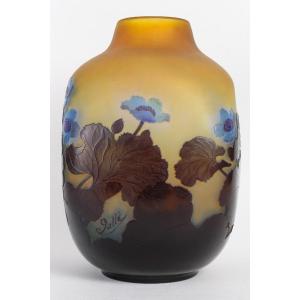








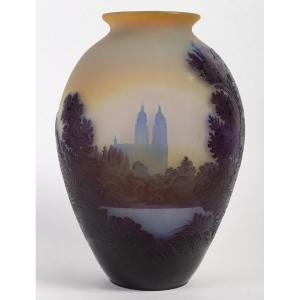
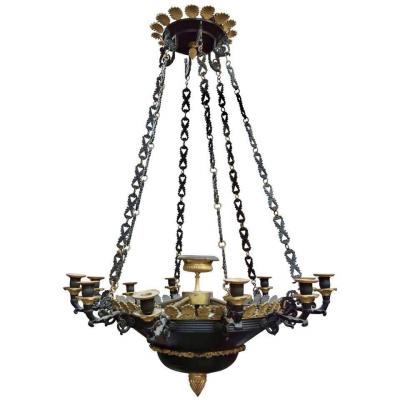


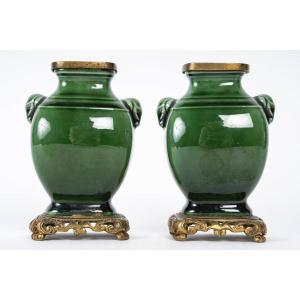

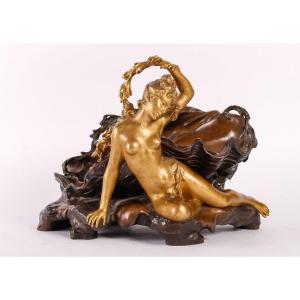



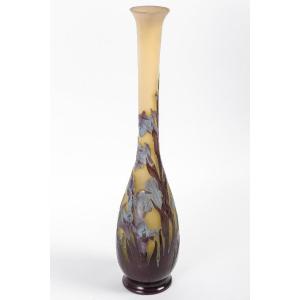
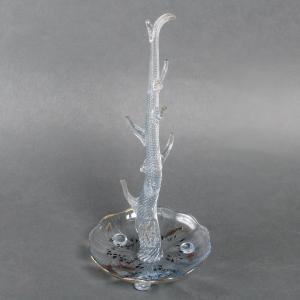

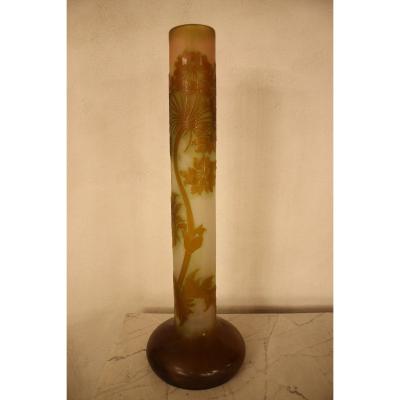

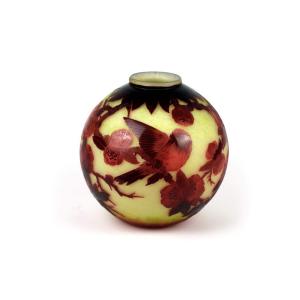





 Le Magazine de PROANTIC
Le Magazine de PROANTIC TRÉSORS Magazine
TRÉSORS Magazine Rivista Artiquariato
Rivista Artiquariato